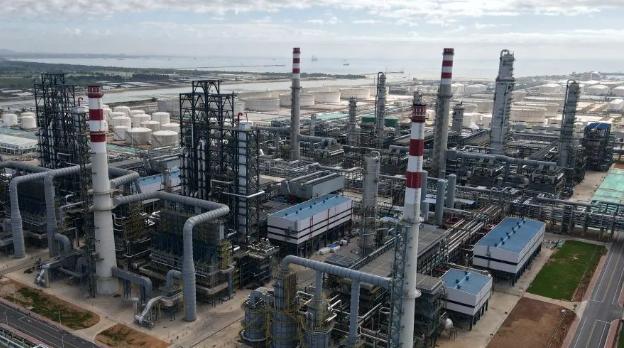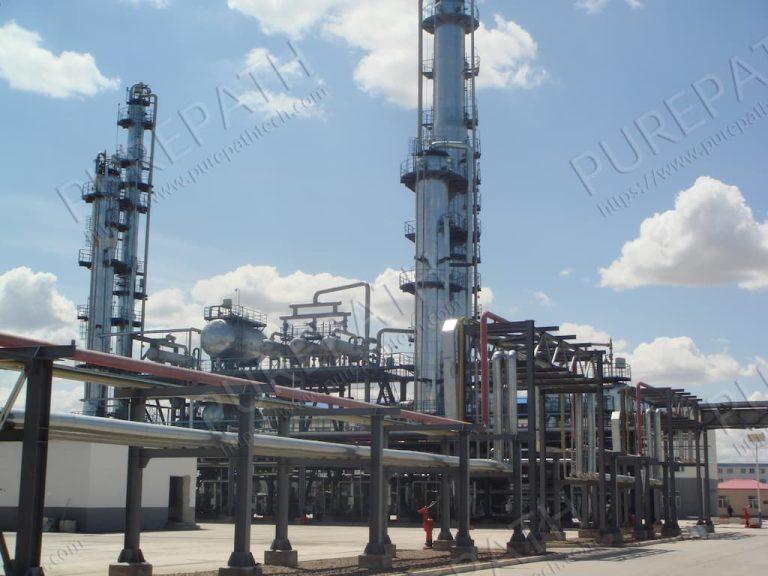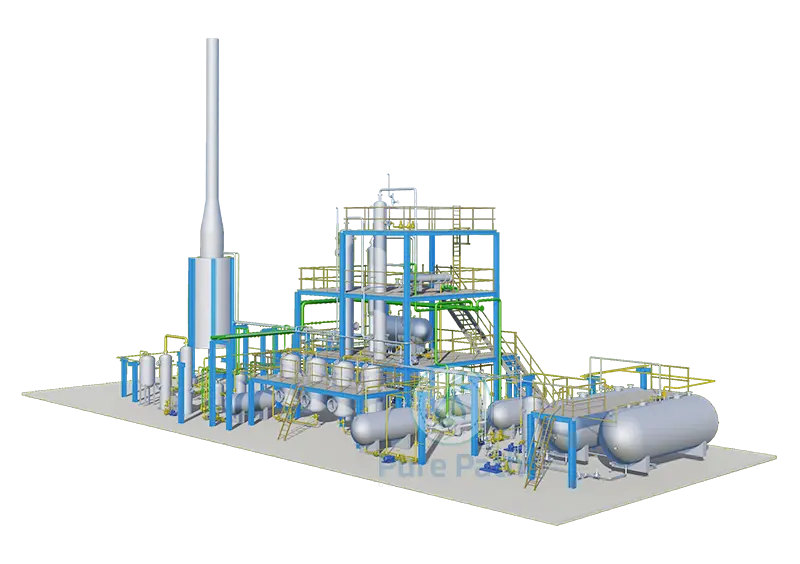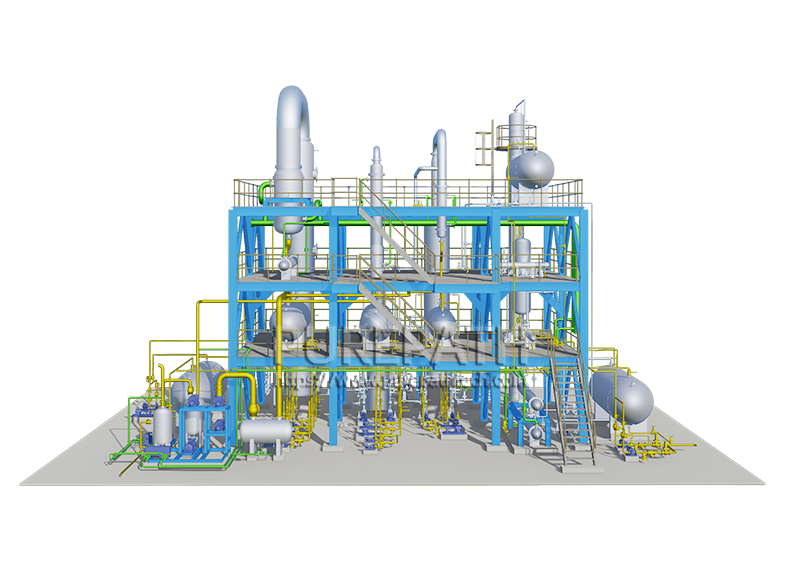The Role of Advanced Catalysts in High-Efficiency Naphtha Hydrotreating
Considering the naphtha hydrotreating unit‘s role within the hydrotreating system, the unit’s profitability is more important than ever, with the naphtha hydrotreating unit’s profitability being driven by the other refinery units. Given the advancements made in designed equipment, reactors, and control systems, one variable continues to influence hydrotreating the most… the catalyst.
As a manufacturer, my partnerships with refinery operators and process engineers allow me to observe the influence and potential of the right catalyst in hydrotreating systems. The right catalyst provides the hydrotreating system with the ability to achieve more desulfurization, consume less energy in the process, and sustain the unit for longer cycles.
This article provides a summary of what refinery operators and process engineers are most interested in when it comes to catalysts to assist their hydrotreating units.
Why Catalysts Matter in a Modern Hydrotreating Unit

Currently, in hydrotreating units, the catalyst has the most influence on performance in the current refining environment. There are other factors, such as equipment design and process control, but the catalyst predominantly impacts the rate at which the unit consistently removes sulfur, nitrogen, and olefins, as well as the rate at which the unit removes the aforementioned compounds through the cycle.
When trying to achieve the goal of ultra-low sulfur gasoline or protecting the reformer from even the smallest contaminants, the hydrotreating catalyst becomes a key aspect. Modern catalysts need to deal with used variable crudes, keep high activities in lower-severity conditions, and provide stable performance while feed quality varies.
Performance in the unit, most times, is improved the fastest and most measurably by upgrading the catalyst. Refineries are able to benefit from advanced catalyst formulations.
- Realize profound desulfurization without an increase in operating temperature.
- Reduce hydrogen consumption and overall energy costs
- Improve reformer feed quality, extending downstream catalyst life
- Run longer cycles with fewer operational disturbances
For most operators, these gains translate directly into higher throughput, steadier product quality, and better profitability. This is why the choice of catalyst cannot be viewed purely as a technical decision; it’s an integral part of refining strategy in a competitive market.
Key Catalyst Functions Inside a Naphtha Hydrotreating Unit

In a naphtha hydrotreating unit, the catalyst does much more than simply remove impurities. It controls the chemical reactions determining feed stability, downstream protection, and finished fuel quality. When a unit is running in top form, it is usually because the catalyst system is performing these core roles at an extremely high level.
Deep Desulfurization
The main aim in naphtha hydrotreating is the removal of sulfur, and today’s product specifications are imposing extremely low sulfur contents in some cases, down to a few parts per million. Advanced catalysts are engineered to efficiently convert sulfur compounds such as mercaptans, sulfides, and thiophenes to hydrogen sulfide, ensuring the hydrotreating unit delivers a clean, reformer-ready stream.
The lowering of aromatic structures and other impurities
While most units aren’t mainly focused on the lowering of aromatics, modern hydrotreating catalyst systems can reduce the aromatic content and capture other trace metals and impurities that inhibit the reformer from performing optimally, increasing the reformate yield and allowing the product’s quality to be predicted more reliably.
The ability to maintain reactor stability over long periods
The ability to keep catalyst activity over extensive periods of time is a trait of a well-engineered catalyst. With an optimized pore structure and fine metal dispersion, modern catalysts avoid the blocks of coke, uneven heat ranges, and deactivation that make units have to perform and re-adjust in uneven regimes.
Olefin Saturation for Feed Stability
Naphtha streams often contain substantial quantities of olefins that can form gum, cause instability, and increase coking in the reformer. The high-activity catalyst will be able to saturate such olefins at moderate temperatures, thus stabilizing the feed and reducing thermal stress in the downstream equipment. This directly contributes to improved process reliability and longer run lengths.
Nitrogen Removal to Protect Reforming Catalysts
Nitrogen compounds in even very low concentrations can poison the platinum-based catalysts of catalytic reforming. Effective hydrotreating catalysts convert organic nitrogen species to ammonia, thereby protecting the reformer and avoiding costly deactivation or regeneration cycles.
In conclusion, the most modern catalysts in a naphtha hydrotreating unit allow for the most stable operation. They provide a buffer for the downstream reforming units and allow extreme confidence in meeting modern fuel regulations.

Key Types of Catalysts Used in a Naphtha Hydrotreater
Selecting the proper catalyst is critical to achieving a stable, efficient operation in any naphtha hydrotreating unit. Although many different formulations exist, the following catalyst families represent the core technologies that the majority of refineries depend on to deliver performance, longevity, and product quality.
- Co-Mo (Cobalt–Molybdenum) Catalysts
Co-Mo catalysts form the backbone of the industry’s standard naphtha hydrotreating. They give good, consistent desulfurization activity at moderate severity and thus are an economical selection for units where conventional sulfur reduction is targeted without severe operating conditions.
- Ni-Mo (Nickel–Molybdenum) Catalysts
Ni-Mo catalysts display higher hydrogenation activity compared to Co-Mo, which is important for deeper desulfurization and better saturation of olefins. For those refineries operating with variable or higher-sulfur feeds, Ni-Mo systems are preferred in order to maintain product quality while keeping temperatures in control.
- Ni-W (Nickel–Tungsten) Catalysts
Ni-W catalysts have been designed for applications where maximum desulfurization efficiency and long cycle lengths are required. Their strong hydrogenation capabilities make them especially valuable for units facing tougher sulfur species or operating at higher throughput. They also provide added stability against deactivation and coke formation.
- Specialised Hydrogenation Catalysts
In practice, when reformer protection or feed stability is of primary importance, dedicated hydrogenation catalysts are often utilized upstream of conventional hydrotreating beds. They improve olefin saturation, reduce gum formation, and help maintain a clean, stable feed for catalytic reforming.
- Advanced Support Structures and Pore Designs
Modern catalysts utilize engineered alumina supports that maximize pore volume and diffusion efficiency. These structural enhancements lower pressure drop, improve heat distribution, and increase catalyst run length-the principal benefits for the refineries seeking to push unit capacity without increasing severity.

Catalyst Selection Guide for Your Hydrotreating Unit
Selection of the right catalyst is a key driver of performance and life for a hydrotreating unit, particularly for naphtha applications. There’s much more to the selection process than product sheet matching, as it must involve an in-depth understanding of feedstock, product targets, and unit operating conditions.
- Feedstock Characteristic Evaluation: Naphtha feedstock shows variations in sulfur content, nitrogen species, and the level of olefins. A description of the feedstock composition will identify the family of catalysts appropriate to reach deep desulfurization with stability.
- Define Product Specifications: Your target sulfur, nitrogen, and olefin levels should guide the catalyst selection. Over- or under-specifying catalyst activity can impact both OPEX and cycle length.
- Match Catalyst to Operating Conditions: Consider reactor inlet temperature, hydrogen partial pressure, space velocity, and existing reactor configuration. The catalyst should perform efficiently within your current hardware without pushing the unit beyond its design limits.
- Optimize for Cost and Performance: High-activity catalysts can reduce hydrogen consumption, lower operating severity, and extend cycle lengths-delivering measurable cost savings and reliability benefits.
- Optimize for Proven Field Performance and Support: Select catalysts based on proven performance under similar feed conditions. Work with suppliers who can provide technical guidance during start-up, assist in start-up, and monitor performance.
In short, thoughtful catalyst selection will make your naphtha hydrotreating unit operate safely, efficiently, and consistently, yielding cleaner fuels and protecting downstream units.
Wrapping Up
Advanced catalyst technology is of major importance in attaining high performance, reliability, and cost efficiency in any modern hydrotreating unit. With the right catalyst system, operators can realize deeper desulfurization at lower severity, extend cycle lengths, protect downstream reforming units, and meet increasingly strict fuel standards.
Evaluation of catalyst alternatives should be one of the primary steps for refineries looking at expanding capacities, upgrading existing systems, or improving product quality—oftentimes offering significantly more value than a hardware change.
Whether you need assistance in choosing the proper catalyst or have questions regarding specific recommendations for your naphtha hydrotreating unit configuration, please do not hesitate to contact us. Our team is always ready to share technical insights gained from real operational experience.







